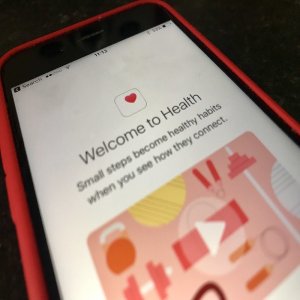
Tech Needed to Democratize Health Access, Promote Prevention
 By Miriam Bello | Senior Journalist and Industry Analyst -
Wed, 03/16/2022 - 09:14
By Miriam Bello | Senior Journalist and Industry Analyst -
Wed, 03/16/2022 - 09:14
Prior to the pandemic, healthtech was a vision for the future. Today, it is present in diagnosis, treatment, management and innovation. Technology has democratized health access and has helped to establish a preventive health culture. Still, many barriers are preventing a full technification of the sector.
“Tech adoption within the healthcare sector has historically been slower in Mexico because doctors and other entities in the sector take their time adapting to emerging changes,” says Roberto Aguilera, Health Sciences and Wellness Consulting Partner at EY Latin America North. However, according to an EY international survey, industry players are now prioritizing future investment and incorporation of technology into their practices.
Pharmaceutical companies are leading the way in tech integration. “We are convinced that technology facilitates business. Adapting to changes, opportunities, trends, requirements, regulations and controls is easier using technology,” says Fernando Gamallo, CIO of Sanfer.
Tech offers greater control of raw materials and of what, when and how the company is producing to prevent any shortages and always be responsive to the patient’s needs. “Without even changing manufacturing processes, technology does influence the way our plants work. In the warehouse, automation helps to administer orders, clients and our over 2,000 SKUs,” says Gamallo.
In terms of innovation, tech leads to sustainable R&D models that impact costs. “Research costs have increased together with the complexity of new developments. Incorporating information tools and data analysis is essential to reduce development times as we have greater access to information and better internal communication, which leads to cost reductions,” says Florencia Davel, General Manager for Latin America at Bristol Myers Squibb.
Companies such as Novartis use tech to promote health among the population. Through a partnership with IMSS, Novartis provides the institute with tech tools to enable telemedicine practices for affiliates through a telemedicine platform called Consultorio Móvil, which enables doctors to host remote consultations with patients with mobility complications or COVID-19 contagion risk. “This model offers schedule continuity for doctors and it enhances health access as there are no space barriers,” shares Fernando Cruz, Country President and Head of Corporate Affairs and Communication at Novartis Group Mexico.
Medical devices manufacturers are tech generators by nature. However, they have been recently using different approaches to have a greater impact on patients and providers. One example of these efforts is Omron, which is pushing connectivity to allow patients to monitor their health on their phone or through an app. “We are working to launch a portfolio of connected products, including not only pressure monitoring devices but also thermometers, nebulizers and so on,” says Vanessa Vallarte, Executive Director of Corporate Strategy and Digital Health for Latin America at Omron Healthcare.
Hospitals in Mexico are also joining the digital transformation by modernizing facilities and integrating digital tools that can benefit internal processes, from the admission of a patient to the complete generation and use of electronic clinical records (ECR), says Javier Potes, Director General of the Mexican Hospital Consortium (CMH). Private hospitals in Mexico are seeking a systematization of the entire health system to interconnect different facilities, including pharmacies, laboratories, clinics and financing services. “Having access to this complete information will allow all actors in the health chain to provide better care,” said Potes.
Tech for Patients and Doctors
The COVID-19 pandemic has also pushed patients and physicians into a world of digital health tools. “Overall, the pandemic has amplified the need for care provision and remote patient monitoring outside traditional healthcare settings, patient self-monitoring using various connected devices and digital therapeutics that can deliver interventions via apps,” says Mario Muniz, General Manager for North Latin America at IQVIA.
Technologies that increase patient security are among the strongest trends as they provide clinical excellence and facilitate communication with providers and consumers. Previously, technologies that could help to better approach the patient, like telemedicine, were neglected. Now, telemedicine is the most common healthtech solution.
The accelerated growth of telemedicine drove providers and entrepreneurs to create professional platforms to offer this service. According to Oscar de la Garza, CEO and Founder of MEDPACOM, there are three factors that determine a professional telemedicine practice. The first is the proximity between the doctor and patient as there might be health complications that need to be handled in person. Second is the trust built with the doctor. The final factor is the confidentiality of the private information shared during the appointment. “This is one of the reasons why telemedicine had not escalated faster. When a telemedicine platform paired a random patient with a random doctor, it was basically breaking these three factors,” says de la Garza.
Telemedicine also powers solutions like Mamotest’s mammographs to enhance access to a proper, timely diagnosis for national burdens like breast cancer. This solution does not depend on a face-to-face consultation as it virtually reaches out to specialists to obtain a professional diagnosis from the results of a patient, allowing Mamotest to be used by anyone, no matter where they live. Another example is Nubix, which provides access to a radiologist through a platform, saving months of wait times due to the lack of specialists in Mexico. “For diseases that progress quickly, this solution can save lives,” says Amiel Rosales, CEO and co-Founder of Nubix.
Tech as a Permanent Health Practice
While its impact is clear, there are still areas of opportunity to ensure that tech will remain a standard practice in health. A study by Global Health Intelligence found that even though telemedicine saw significant growth, just 3 percent of the hospitals in Mexico offer this service as part of their portfolio. For experts like Arturo Jain, CTO and co-Founder of Nubix, interoperability and cooperation among all actors is essential to standardize tech use as it would allow all companies to offer better service. “An interconnected system would register the patient’s journey through a health service so every actor can be aware of their state.”
Training and education of medical professionals in these new tools in also fundamental for widespread tech adoption. These professionals must be ready to implement such technologies to boost operational efficiency and improve patient outcomes and experiences, says Jorge Valdez, Dean of the Medicine and Health Sciences School (TecSalud), Tecnológico de Monterrey.
















